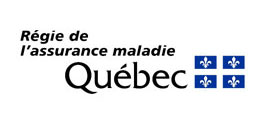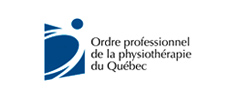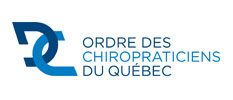What is a musculoskeletal ultrasound ?
Musculoskeletal ultrasound is one of the preferred exams for diagnosing certain musculoskeletal disorders, in tendons or muscles in which x-ray exams are non specific. This is an examination that is precise and dynamic.
What does an injection treatment consist of? The drug normally injected is a derivative of cortisone. It is a natural hormone with anti-inflammatory properties.
Injections are often used and it has been demonstrated to be extremely effective in alleviating pain and promoting healing.
The procedure begins with a good local anesthetic followed by injecting cortisone directly into the problem area.
Since it reduces pain, it increases the effectiveness of physiotherapy, which is why it is often used in combination with this therapy.
If your doctor decides to repeat an injection, it is recommended to wait four to six weeks prior to doing so.
Musculoskeletal ultrasound procedure
During the exam
You lie on the examining table. The radiologist will begin with an ultrasound exam and you will be asked to move the joint being examined.
After the skin is disinfected, the radiologist will take the ultrasound markers and then inject the cortisone. This procedure usually takes only a few minutes.
Duration of the exam
The time may vary, but the duration is approximately 15 minutes, including the preliminary ultrasound exam.
Ultrasound Services
The following is a list of ultrasound services that we offer. After a diagnostic radiologist completes your exam, we’ll give you the results in person. Your results will also be transmitted to your doctor.
- Abdominal
- Abdominal with doppler
- Abdominal & Pelvic
- Cardiac
- Nuchal translucency and prenatal screening
- Cervicoencephalic Doppler
- Venous Doppler
- Pelvic with or without endovaginal
- Testicular
- Thyroid
- Soft tissue
Injection Treatement - FAQ
The injection treatment that you will undergo is performed under local anaesthetic. It is a low risk procedure that is extremely precise as it is done utilising ultrasound technology.
Please note that we do not perform this procedure on patients taking an anticoagulant, such as Coumadin, Heparin or Pradax. The procedure should be conducted in a hospital setting. Talk to your doctor.
What is the medication used?
We regularly use Xylocaine 1% to anaesthetize the joint to make the procedure less painful. Thereafter, in most cases, we use cortisone derivatives that are well-known for its very low rate of side effects. The drug used rarely causes discomfort due to the very small dose used.
Is it painful?
The examination may be uncomfortable for some people. On the other hand, an excellent local anesthetic helps to carry out the procedure with a minimum of discomfort.
Can I be accompanied?
Yes.
Can I drive after the medical examination?
In general, you will be able to drive normally. However, if the radiologist considers that there is a risk for you to take your vehicle, he or she will let you know.
Can I eat before the procedure?
Yes, it is better not to be fasting.
Can I return to work on the same day?
It all depends on your work. We suggest that you consult your doctor.
Can I have my physiotherapy treatment on the same day?
The radiologist will inform you according to the procedure that has been performed.
How many infiltrations can we receive?
A maximum of three per year for the same site. You must wait one month for infiltration in the same place and two weeks for a different site.
How long will it take me to see an improvement?
In most cases, the expected result may take 48-72 hours. Sometimes the patient may experience a little more pain during the first 24-48 hours. If this happens, we advise you to take anti-inflammatory medication you usually use.
When should we worry?
It is not normal to have a fever.
Hives and breathing difficulties may indicate a significant allergic reaction. It is also abnormal to have large joint swelling.
We recommend that you consult your doctor for any emergencies or further questions.
FLUOROSCOPY
We are pleased to announce that we now offer a new fluoroscopy service for the treatment of spinal and joint pain.
Appointment Centre
Écho-Médic (Laval - Public)
1575, boul. de l'Avenir, suite 110, Laval, Qc, H7S 2N5Écho-Médic (Boisbriand - Public)
20865, chemin de la Côte Nord, suite 102, Boisbriand, Qc, J7E 4H5Réso-Médic (Laval - Private)
1575, boul. de l'Avenir, suite 110, Laval, Qc, H7S 2N5Customer Service Opening Hours
- Monday to Thursday - 7:30 am - 4:30 pm
- Friday - 7:30 am to 3:00 pm
- Saturday and Sunday - Depending on availability
Examination Opening Hours
- Monday to Thursday - 7 am - 8 pm
- Friday - 7 am - 3:30 pm
- Saturday and Sunday - Depending on availability
Career opportunities
Please send us your resume to the following address: cv@echo-medic.com
New service now available!
FLUOROSCOPY
We are pleased to announce that we now offer a new fluoroscopy service for the treatment of spinal and joint pain.







Stay connected